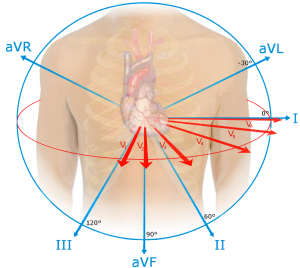For the longest time, heart disease has been the leading cause of death in America. It has become such an issue that nearly 1 in every 7 american deaths are due to some form of heart disease. I personally have seen multiple family members suffer at the hands of a singular or multiple heart attacks, as I’m sure many people also have. But thanks to new ways hospitals are dealing with time restrictions, we might be on the way to heart disease no longer being the leading cause of death in the US. You can read the full article which goes in depth on the steps taken and the outcomes of those steps.
The largest focus of the initiatives was to trim the excess time from ambulance to balloon (the balloon is the final step in treating the heart attack). The biggest upgrade that all hospitals have incorporated has been to give the patients the electrocardiogram (EKG) while they are in the ambulance being transported to the hospital. To understand how important this change is, you must look into the science behind a electrocardiogram. With each time your heart beats, it gives off a small electrical charge which helps stimulate the muscles in the heart that continue the beating. The EKG is used to measure the electrical output of your heart, and can determine wither the output is normal, slow, fast, or abnormal. If they find anything negative about the electrical activity, they can determine the location of the heart attack based on the speed of activity.
Completing the test in the ambulance has shaved off a lot of time from the time the patient gets to the hospital time to when they are able to clear the blockage with the balloon. It limits the time the doctor has to spend examining the patients tests while they are waiting to be treated, instead the hospital staff is able to start the procedure when the ambulance arrives at the hospital.
There have been many other steps taken to trim down the time. After checking with hospital lawyers, hospitals were able to cut down on the amount of information and paperwork needed from a patient before they are able to be operated on. Hospitals are now asking that all hospital staff members that are on call stay within 30 minutes of the hospital, leading to more available doctors and also doctors that are able to arrive much more quickly. Some doctors have gone as far as renting out hotel rooms close by to the hospitals or staying with relatives. And lastly, hospitals gave the authority to the ER doctors instead of relying solely on cardiovascular specialists, who often were contacted through fax which could take up to 30 minutes to hear back from.
What is the science behind a quicker ambulance to balloon time? When an artery is clogged, it prevents blood from flowing throughout the heart. When blood is unable to travel through the heart as it normally does, the blood is temporarily disabled, but the longer the heart is clogged, the cells start t die. This is unfortunately is what causes someone to die from the heart attack. But luckily with these improvements to treatment, the mortality rates of heart attack victims has dropped an astounding 38%.
Sources:
https://www.cdc.gov/mmwr/preview/mmwrhtml/mm6337a6.htm


